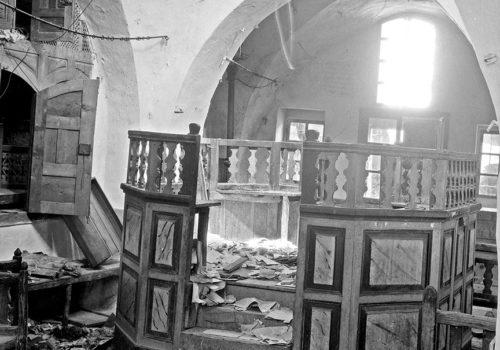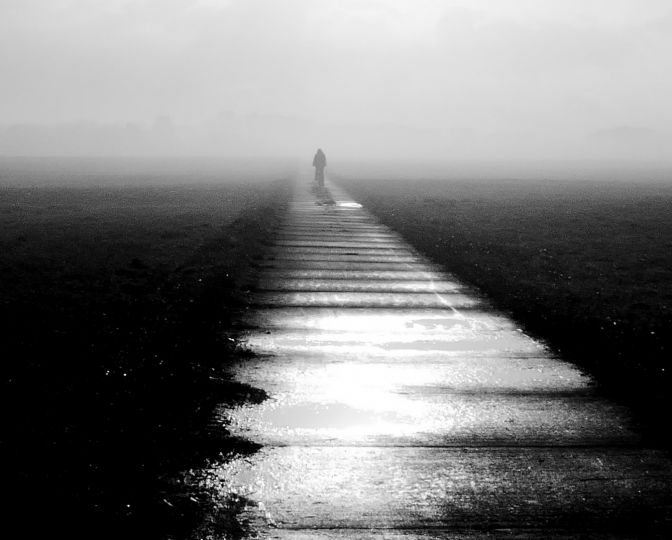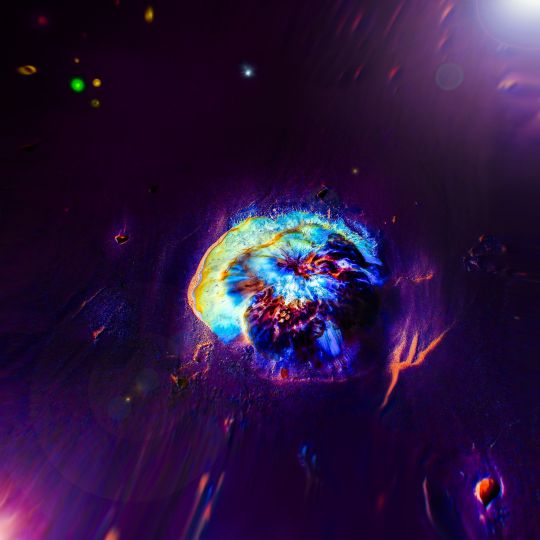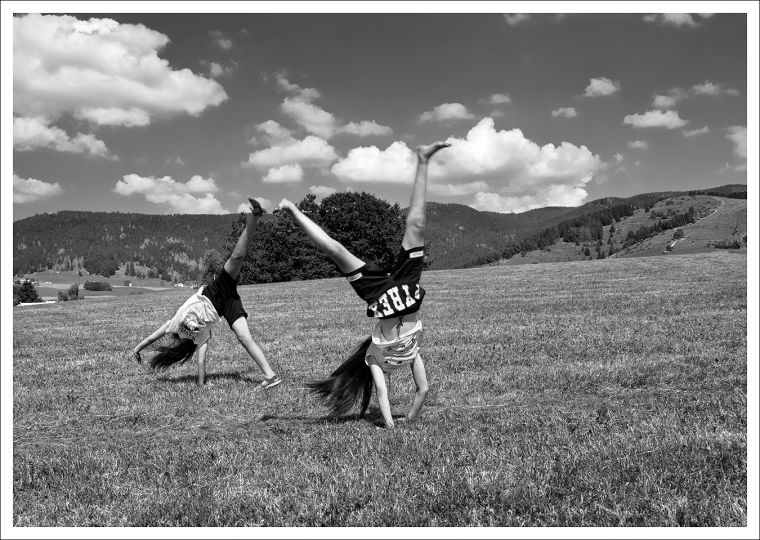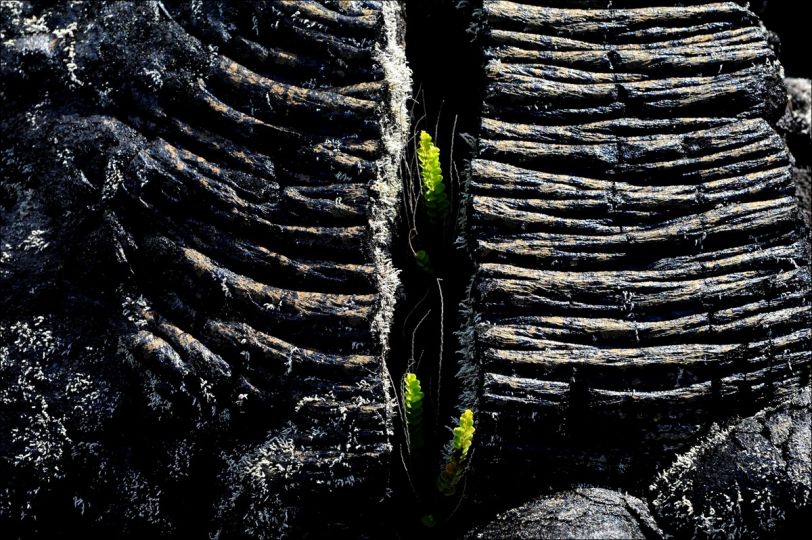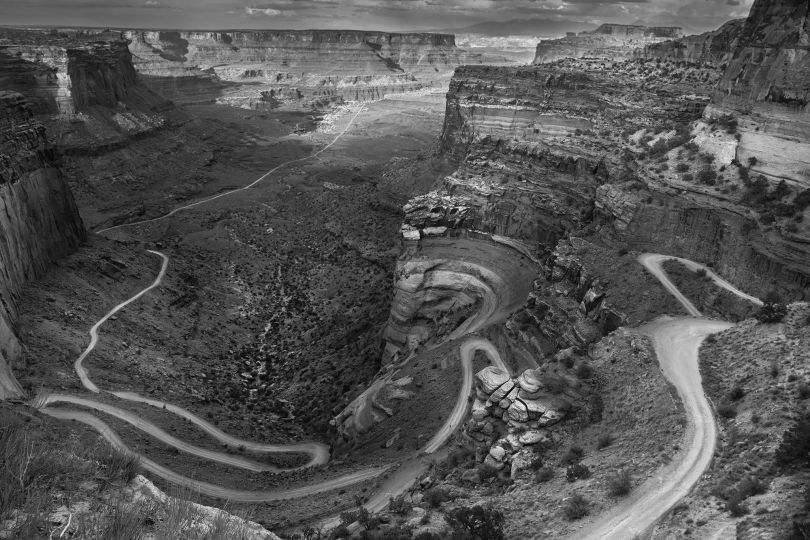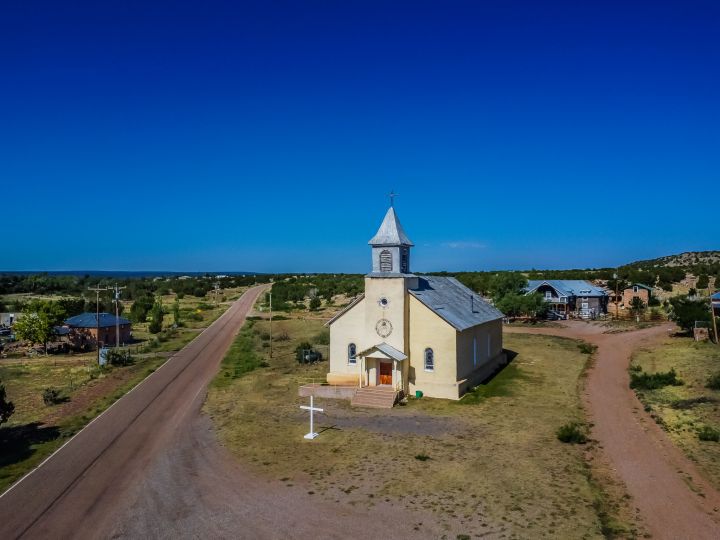This essay, the 10th in the series, examines the role of photo-based imagery in the post-Holocaust world of Jewish self-determination that lead to the restoration of Israel as a Jewish homeland. To understand how this came about, it is crucial to have a basic knowledge of the 3000 year-old Jewish history in Israel.
A Brief History of Israel & Zionism & the Rise of the New Jew
by Robert Hirsch 2024
VASA Journal on Images and Culture (VJIC), Theme Editor and Writer
www.lightresearch.net
This essay examines the role of photo-based imagery in the post-Holocaust world of Jewish self- determination that lead to the restoration of Israel as a Jewish homeland. To understand how this came about, it is crucial to have a basic understanding of the 3000 year-old Jewish history in Israel. Due to the number of countries and people affected, select examples represent the uncountable other events, locations, and people.
Additional information about specific images can be found at the end of this essay (Image Notes). Images have been minimally adjusted to facilitate online viewing, but have not been overtly edited from their source.
The hollow horn plays wasted words Proves to warn that he not busy being born Is busy dying
Bob Dylan (Robert Zimmerman)
“It’s Alright, Ma (I’m Only Bleeding),” 1964.
Jewish Self-Determination: The Restoration of Israel
World War II saw European civilization slide into a moral abyss and the Jews were the odd man out – universally despised and rejected in a treacherous sea of grievance and loathing. Jews had no place to escape to, no safe sanctuary. They were unwanted human waste who were not connected to the place upon which they stood. Subliminally, all Holocaust images raise the existential question of how do caustically shunned and displaced people, who had violently lost everything, salvage their history and identity? How does one deal with the anxiety of wandering and impending doom when the place you once called home is no longer your home and is actively trying to kill you?
After the war ended with the unconditional surrender of Germany and Japan, only about 5% of Americans thought more refugees should be allowed into the country. The U.S. quota system of 1923 allowed only 1,500 Jewish refugees into the country.[1] Other countries were no more welcoming. The British continued to greatly limit Jewish immigration to Eretz Israel (the Land of Israel, whose territory matches the land of biblical Israel) until it turned the area over to the United Nations.[2]
10.01 American Institute Public Opinion Poll, December 1945. American Institute of Public Opinion. United States Holocaust Memorial Museum, Washington, DC.
Caption: “Should we permit more persons from Europe to come to this country each year than we did before the war, should we keep the number about the same, or should we reduce the number?” A May 7, 2023 poll by The Associated Press-NORC Center for Public Affairs Research shows about 4 in 10 U.S. adults say the level of immigration and asylum-seekers should be lowered, while about 2 in 10 say they should be higher, according to the poll. About a third want the numbers to remain the same. See: www.pbs.org/newshour/nation/americans-divided-on-immigration-and-refugees-new-ap-poll-says
A Brief & Concise History of Israel and Judea
The people of modern-day Israel share the same language and culture shaped by the Jewish heritage and religion that had passed through generations starting with the founding father Abraham (ca. 1800 BCE). Jews have had a continuous presence in the land of Eretz Israel for the past 3,300 years as the indigenous population.[3] The history of Israel itself dates back to the Iron Age (1200-550 BCE), when two Israelite kingdoms, Israel and Judea (aka Judah), controlled much of the north, while the Philistines occupied its southern coast (the word “Jew” comes from Judea). The First Temple was built in 1000 BCE by King Solomon after King David conquered Jerusalem and made it his capital. The Temple was first destroyed in 586 BC by Nebuchadnezzar, the King of Babylon, when he conquered Jerusalem. The Second Temple period (586 BCE-AD 70) is marked by the return of Jews to Jerusalem from their exile in Babylon in 538 BCE. The Persians went on to conquer the Babylonian Empire in 539 BCE. There are significant archaeological remains from the Second Temple period, including the Kidron Valley tombs, the Western Wall, Robinson’s Arch, the Herodian residential quarter, numerous other tombs, and walls.
See: Alex Winston, “City of David: Jerusalem’s ancient capital and modern vision,” The Jerusalem Post, April 27, 2024, www.jpost.com/business-and-innovation/real-estate/article-798607?vgo_ee=i8QASWG30Z1AhBdPKK1p%2Fs5VhTXrSpT2a9M6n1mPoOsjPt59hxmQZA%3D%3D%3AjHO60j3jKDgg1X7ZgBAFez0t3j7Va11q
Judaea, now part of modern day Israel, had been a Roman ally since the second century BC and became a Roman province in 6 CE. However, Roman suppression of Jewish life escalated provoking a full-scale revolt in 66 CE. Superior Roman forces, led by Titus, were finally victorious, razing Jerusalem and the Second Temple to the ground (70 CE) and defeating the last Jewish outpost against Roman subjugation and slavery at Masada (73 CE). Hundreds of thousands of Jews were killed and thousands were sold into slavery, and rest fled from their homeland. The Romans then renamed Judaea – Syria Palestine.[4] This was meant to erase Jewish identification with the land and punish the rebellious Jews by naming the country after their biblical enemies, the Philistines, a group of people originally from the Aegean coastline (modern-day Greece and Turkey).
In 132 CE, the surviving Jews of Judea rose up against their Roman oppressors for the second time in a century. In the initial stages of what has come to be called the Bar Kochba Revolt, the Romans got the worst of it. So the legions adjusted their strategy. Rather than concentrate on suppressing the rebels, the Romans decided to annihilate the entire Jewish population of the Land of Israel.
The results were horrific. Ancient historian Cassius Dio wrote of the Jews: “50 of their most important outposts and 985 of their most famous villages were razed to the ground. 580,000 men were slain in the various raids and battles, and the number of those that perished by famine, disease and fire was past finding out. Thus, nearly the whole of Judea was made desolate.”[5]
Thus making “Palestine” a cancellation of Jewish existence.
This was followed by the Rashidun Caliphate, which was the first of four successive caliphs to rule after Muhammad’s death in 632 CE. During its existence (632-661) the Muslim empire became a powerful cultural, economic, and military force that rapidly expanded and conquered much of the Middle East, including parts of modern-day Saudi Arabia, Iraq, Syria, and Egypt and lead to an influx of Arabs in these areas.[6]
Eventually, the area was conquered by the Ottoman Empire in 1516. Despite its religious significance, Jerusalem remained a provincial backwater until World War I, when the Turks who had formed an alliance with Germany were defeated in 1918, leading to the dissolution of the Sultanate and the British taking control of Palestine. During the war, in 1917, the British government had issued The Balfour Declaration announcing its support for the establishment of a “national home for the Jewish people” in Palestine.[7] The city of Jerusalem has over time been attacked 52 times, captured and recaptured 44 times, besieged 23 times, and destroyed twice. The oldest part of the city was settled in the 4th millennium BCE, making it one of the oldest cities in the world.
In the aftermath of World War I, the victorious British and French Allies enacted the Sykes-Picot Agreement of 1916 that divided the former Ottoman Provinces of the Middle East between themselves, creating 38 new countries. Thirty seven were Muslim-majority including Iran, Iraq, Jordan, Syria and Lebanon. In 1922 the League of Nations gave Britain mandatory power over Palestine and adopted the Balfour Declaration as international law, which would partition the British Mandate into Jewish and Arab states. This was followed by the San Remo Resolution of April 25, 1920 in which the Supreme Council of the Allied Powers (Great Britain, France, Italy, Japan, with the U.S. acting as an observer) adopted a 500 word document that defined the future political landscape of the Middle East out of the defunct Ottoman Empire. The Arabs received equivalent national rights in all the remaining parts of the Middle East – over 96% of the total area formerly governed by the Ottoman Turks. This was adopted by the League of Nations as international law in 1922. After 1,850 years of foreign occupation, oppression, and banishment by a succession of foreign powers (Romans, Byzantines, Sassanid Persians, Arab Caliphates, Crusaders, Mameluks, and Ottoman Turks), the modern nation of Israel was finally conceived. Those who label Jews as colonial intruders who steal other people’s land is at best false propaganda. Howard Jacobson wrote:
I don’t call for supine obedience to Zionism from Jews, only that they get their own history right in a matter of such importance. Zionism wasn’t a colonial enterprise, they should know that. In fact, Zionism wasn’t any one thing. There were many Zionisms, some more idealistic than others, but the founding of Israel wasn’t an act of colonial depredation. Fleeing from pogroms isn’t colonising. Returning to one’s old home, as Jews had been returning to it for centuries, isn’t colonising. A refugee isn’t a colonist.[9]
Arab Pogroms in Hebron of 1929 and Jaffa of 1936
Arab efforts to prevent Jewish migration into Palestine led to an interminable civil, political, and armed struggle between the Palestinian Arabs and Jews. Early morning on Saturday, Aug. 24, 1929, some 3,000 Muslim men armed with swords, clubs, axes, and daggers went from Jewish house to Jewish house in the holy city of Hebron, stabbing, raping, and in some cases castrating and burning their victims alive. Jewish children watched as their parents were butchered by their Arab neighbors. Infants were killed in their mothers’ arms. Houses and synagogues were looted and torched. Sixty-seven unarmed Jewish men, women, and children were murdered that day. One of the world’s most ancient Jewish communities, composed of some 800 people before the massacre, was decimated, along with centuries of coexistence that had made Hebron a model of peace between Jews and Muslims. In the aftermath of the attack, the British authorities that ruled Palestine forced the Jews of Hebron to evacuate, turning them into refugees. Jews had lived in Hebron since biblical times, their lives centered around the Tomb of the Patriarchs, where Abraham and Sarah, Isaac and Rebecca, Jacob and Leah are believed to be buried. Much like the Jews who were killed on Oct. 7, 2023 were not settlers, the Jews killed in Hebron in 1929 were not Zionists, all they wanted was to be Jewish. The Hebron massacre of 1929 is not only ground zero of the Arab-Israeli conflict, but also a vital prequel for anyone wishing to understand or resolve the existential war Israel is fighting.
10.06 American Colony (Jerusalem), Photo Department. Synagogue desecrated and looted by Arab rioters, Hebron, August 23 to 31, 1929. Variable dimensions. Gelatin silver print. Library of Congress Prints and Photographs Division Washington, D.C.
In April 1936, the Muslims of Jaffa rampaged through the streets, beating Jews, wrecking Jewish businesses and homes, killing 14 Jews and forcing 12,000 Jews to flee Jaffa as refugees. This pogrom morphed into an armed Arab Rebellion against British rule from 1936 to 1939, which lead to the British halting nearly all Jewish immigration, cutting off their avenue of escape ahead of the Holocaust. In turn, this lead to an armed Jewish Revolt against the British in mid-1940s. In 1947 the British government announced it would end its Mandate. That same year the United Nations General Assembly adopted a plan to create independent Arab and Jewish States, which would be economically connected along with a Special International Regime that would control Jerusalem and its environs.
10.07 Unknown photographer. British Police Dispersing Arab Rioters Protesting Jewish Immigration in Jaffa, 1936. Variable dimensions. Gelatin silver print. French News Agency, Gallica Digital Library.
International law, including the UN Charter, refers to both banks of the Jordan river, since 1920, as Palestine/Land of Israel as the “national home of the Jewish people.” The same international law, including the UN Charter, accepted the partition of the country in 1922 after 78% of it, located on the left bank of the Jordan river, was handed over to the Arabs and the remaining, on the right bank of the river, to the Jews. The Jews accepted the partition and the Arabs rejected it. The Arab Higher Committee (AHC), which was the de facto government of the Palestinian Arabs, circulated a paper, declaring: “The Arabs have taken into their own hands the final solution of the Jewish problem. The problem will be solved only in blood and fire. The Jews will soon be driven out.”[10] Thus on November 30, 1947 an open war began with full-scale Arab rioting, stoning, and killing Jews in and around Jerusalem and Tel-Aviv.[11]
It is vital to know that there never has been a Palestinian state – the area was a province of the Ottoman Empire. The term “Palestinian” only entered English and other European languages in the 1870s and referred to both the land’s Arab and Jewish inhabitants. The goal of the first Palestine Arab Congress (1919) was not to create an independent Arab state, but to attach Palestine to Greater Syria. It should also be noted that at least 25% of the Arab Congress’s leaders discreetly sold land for Jewish settlements. They did however create a Muslim religious authority, the Supreme Muslim Council, under Hajj Amin al-Husseini, the Grand Mufti of Jerusalem, who led a violent revolt against both the British and the Jews in 1936 that was ultimately crushed by the British.[12] In Berlin, where he spent most of the war, Husseini undertook a fusion of Nazism and Islamism[13] as they shared the same enemies[14] and sought a world without Jews..[15] Husseini personally contributed to the German war machine by recruiting Bosnian Muslims for the Waffen SS and organizing intelligence operations in the Middle East. In 1945 he went to Cairo to lead the Palestinian Arab campaign against the creation of Israel.[16] Matthias Küntzel, Nazis, Islamic Antisemitism and the Middle East, Routledge: London & New York, 2003.
10.09 Unknown photographer. Adolf Hitler talking to Grand Mufti Haj Amin el Husseini, Berlin 1941. Dimensions variable. Gelatin silver print. United States Holocaust Memorial Museum, Washington, DC.
Caption: This is from a newsreel of the first meeting of Hitler and Grand Mufti Haj Amin el Husseini in Berlin. The Führer confirmed that the “struggle against a Jewish homeland in Palestine” would be part of the struggle against the Jews. Hitler stated that: he would “continue the struggle until the complete destruction of Jewish-Communist European empire”; and when the German army was in proximity to the Arab world, Germany would issue “an assurance to the Arab world” that “the hour of liberation was at hand.” It would then be al-Husayni’s “responsibility to unleash the Arab action that he has secretly prepared.” The Führer stated that Germany would not intervene in internal Arab matters and that the only German “goal at that time would be the annihilation of Jewry living in Arab space under the protection of British power.” In 1941Husseini also met with Benito Mussolini, the Duce (Leader) of Fascist Italy to get his backing. See: https://encyclopedia.ushmm.org/content/en/article/hajj-amin-al-husayni-key-dates
Zionism
The Allied victory offered European Jews the opportunity to discard the odious chains of restrictions and violent subjugation that had been imposed upon them by both Christian and Muslim societies, to become an autonomous people able to create their own future free from outside domination.[17] To make sure they would never find themselves in such a helpless situation again, many survivors of the Holocaust embraced Zionism with the goal of re-establishing Israel as an anti-colonial, anti-fascist, secular, socialistic state.
Zionism is the movement for the self-determination and statehood for the Jewish people in their ancestral homeland of Israel. Zion is the biblical term for both the land of Israel and Jerusalem (more on Zionism in the next section). At the first Zionist conference of those in the displaced persons (DP) camps in Bavaria, they demanded to permanently dissolve the European Diaspora, lift the British restrictions on immigration to Palestine, and expedite immigration to Eretz Israel. In essence, Zionism supports the birth of a Jewish state in the form of a republic, the only one in the Mideast. Essentially, Jews imagined Eretz Israel into existence. [18]
10.10 Unknown photographer. Unrestricted Immigration Demonstration. Variable dimensions. Gelatin silver print. Vad Vashem, Jerusalem, Israel.
The Holocaust was the culmination of centuries of Christians and Muslims separating and persecuting one group of people who were different from the majority, the Jews, and equating them as the cause of their society’s problems. History has shown that the Jews were oppressed because they did not have a government to protect their rights and no place to escape violent persecution; they needed a home of their own where they could protect themselves and be themselves.[19]
These chronic existential threats lead to the formation of Zionism. as a nationalist movement of Jewish self-determination, which originated in central and eastern Europe. Zionists were motivated by a historical vision of their future identity in their ancient homeland, rather than an imperial strategy or economic vision, or desire to dominate the local population.[20] It’s roots date back to the sixteenth century when wide-spread hatred of the Jews lead their religious leaders to call for Jews to re-establish a Jewish nation in its ancestorial homeland in what is now Israel. Zionism was officially established as a political organization in 1897 by Austrian journalist Theodor Herzl and was later championed by Chaim Weizmann and Nahum Sokolow. Zionism sought to inspire the Jewish people to revive the Hebrew language and re-establish control over their culture, education, history, religion, and traditions. Zionism wanted to give Jews, not only a state of their own, but a sense of agency and dignity that had been lost in exile; as one slogan put it, Jews would go to Palestine “to build, and to be built.”
Herzl dreamed of a democratic Jewish national state in which all citizens, including Arabs, would possess political equality and share in the its economic and social benefits. It is important to note that at this time, there was no Arab national movement in existence anywhere nor were there any Arab democracies. Arab nationalism did not emerge as a political force until World War I, when the British cultivated it in to undermine the Ottoman Empire.
10.12. Ephraim Moses Lilien. Theodor Herzl on a balcony, Basel, Switzerland, December 1901. Dimensions variable. Gelatin silver print. Shapell Manuscript Foundation.
The Rise of a New Jewish Consciousness: The New Jew
In preparing for immigration to the startup nation of Eretz Israel, a key role was performed by the kibbutzim (farming collectives) that had been active in the interwar period, primarily in Poland. Kibbutz Buchenwald was the first agricultural training camp established in 1945.[21] Generally, the kibbutzim were part of the DP camps, but their members lived independently in separate facilities. Their mission was to ready their members for Aliyah (emigration) to Eretz Israel, which included Hebrew and history lessons as well as agricultural training.
10.14 Unknown photographer. A group of children work in the garden of the Stuttgart displaced persons’ camp, Stuttgart, [Wuerttemberg] Germany, 1946-1949. Among those pictured is Lova Warszawczyk, on the far left; Bronia Graudens, fourth from the left, in back; Aviva Rosenzweig (later Goldring, front, far right); and Hadasa Gassenbauer, in front, center, hair up in braids and holding a shovel. United States Holocaust Memorial Museum, Washington, DC, courtesy of Larry Warick.
Theodor Herzl defined the image of this New Jew in his 1902 utopian novel Altneuland (Old-New Land), which was a response to the failure of the Enlightenment values to benefit Jews.[22] Herzl viewed Zionism as the arrival of an authentic image of the Jew in a state without the idea of God or any dogmatization, a utopian concept similar to Nietzsche’s “new European man” (Ubermensch) who generates their own values based on their life experiences and strives to enhance humanity.[23]
At the turn of the twentieth century, the New Jew was a strong, mythic warrior-poet-farmer, a productive kibbutz member, who would defend her/himself while working the Holy Land. Instead of traditional Jewish intellectualism and studying the Talmud, such action figures would learn how to make the desert bloom.[24]
These New Jews would leave the painful struggle of the diaspora behind, abandoning ancient mysterious rituals, and reinvent themselves as free people in their ancient homeland. This break from the past, was an existential revolution. It emphasized the renewal of Jewish identity by means of committing to a life that valued authentic Jewish aesthetic, cultural, and moral values instead of those that imposed by majority cultures.
10.16 The New Jew by Anna Louise Strong. Pamphlet cover. National Library of Australia.
The first organized group of New Jews were known as the Sabras who were the proto Israelis—the first generation, born in the 1930s and 1940s, to grow up in the Zionist settlement in Palestine (in Hebrew, Sabra refers to the prickly fruit of a species of cactus). Emersed in the ethos of the Zionist labor movement and the communal ideals of the kibbutz and moshav (a cooperative agricultural settlement), they planned and worked to make State of Israel a reality. Their attitude was the difference between being in control as opposed to being controlled. If God was unwilling or unable to stop the murder of Jews and their culture, Jews must do it for themselves because the universe is indifferent at best.
For a people devoted to textual study, the invention of photography was a pivotal event for Jews, on par with Gutenberg. Photographs lead to a changing attitude that gave Jews permission to disregard the Torah’s prohibition of making graven images for the purpose of idol worship.[25] This can be seen in the work of Alfred Stieglitz whose goal was to demonstrate that photographers could make work on par with other fine artists.[26] This also opened the way for other Jews, such as Paul Strand and Lisette Model, to play a larger role in the development of modern photographic language. However, in the shtetls of eastern Europe, many Jews still did not want to be photographed. In A Vanished World (1983) Roman Vishniac wrote:
A man with a camera was always suspected of being a spy. Moreover, the Jews did not want to be photographed, due to a misunderstanding of the prohibition against making graven images (photography had not been invente when the Torah was written!). I was forced to use a hidden camera.[27]
10.19 Unknown photographer. Sabra Fighters, 1948. Variable dimensions. Gelatin silver print.
Photographs of Sabras were meant to give physical form to their concept of the New Jew.
The New Jew photographs reveal a radical change in self-identity from studious to physical. Jews realized that the only way to throw off the shackles of Christian and Islamic society limitations were to assert their freedom to be different, because the other societies were not going to change.[28] The New Jew was saying that we have not been able to utilize all our capabilities under the present systems and that the only way that this is going to be possible is through creating a nation where Jews are free to be Jews. This is what the 1948 war was about. The photographs of the New Jews in Palestine not only reflect this reality, but also interpret it by portraying aspects of Jewish life that had not been previously depicted, suppressed or intentionally maligned. They were non-conformists who were free and independent and were not going to be defined by as vermin.
10.20 Unknown photographer. Jewish combatants, Israel, May 20, 1948. Variable dimensions. Gelatin silver print. Keystone-France/Gamma-Keystone.
Agency of Snapshots
The world had reduced the Jewish people to their imposed Jewishness, regardless of their abilities, beliefs, character, and interests. Post war amateur snapshots as seen through Jewish eyes helped to create and define new Jewish personal, group identities, and accomplishments. They were acts of healing and optimism in the aftermath of the Holocaust. Their photographs can also be seen as a secular pursuit of redemption that brought together divergent streams of Jewish life. It was also a break from how European photographers depicted the area.[29]
These nonprofessional snapshots located the raw energy of that time and place along with a resolve to flourish amid adversity. Their informal nature are more like improvised jazz than structured classical music. This spontaneity adds a genuine sense to the snapshots as there is often a personal connection between the picture maker and the subject(s), which infuses emotional value.
10.21 Unknown photographer. Kibbutz members working at the stone quarry of kibbutz Ein-Harod, 1941. Variable dimensions. Gelatin silver print. Government Press Office.
In the U.S. these vernacular characteristics were incorporated into the work of a number of post-war Jewish working-class street photographers such as Vivian Cherry, Louis Faurer, Sid Grossman, and William Klein,[30] which greatly influenced photographic practice. It was somewhat formalized during the 1960s in what was referred to as the snapshot aesthetic,[31] which rejected the canons of modernism and included photographers such as Lee Friedlander and Garry Winogrand. Years later, these attributes can be seen in photographs that were exhibited covering the terrorist attack on the World Trade Center, which were made by anyone in the vicinity with a camera.[32]
10.22 Sid Grossman. Coney Island, 1947. 7-7/8 x 8 inches. Gelatin silver print. Howard Greenburg Gallery, NY.
Caption: As a member of the Photo League, Grossman believed that photographs should serve a social-political purpose. Grossman was a driving force in the organization’s activism between 1938 and 1949. Grossman, who was a member of the Communist Party, was blacklisted and resigned from the League, which led to its collapse in 1951.
Fascism offers people freedom from the self, ridding people of the burden of personal responsibility and the need to critically think. Authoritarianism makes a point to stand in the light of others, instead of building space for one and another, producing a place where one dumps their Jungian shadow self. The New Jew snapshots are examples of the innovative agency they adopted. These photographs acted as vessels into an imagined future community stating: We make decisions, we chose, we act to make order out of the chaos the world continues to thrust upon us. The New Jews refused to be treated as passive objects who were acted upon by forces beyond their control. Their snapshots of everyday moments are intimate, personal pictures meant to be carried in one’s wallet, tacked on a wall, and/or pasted into an album, as opposed to heroic-size work that can only be placed in large businesses, galleries, and museums. They contain no pretense, nor academic aestheticization or theories. Instead these makers are generating their own existential meaning that utilizes photography as a way of revealing and negotiating the complexities of human existence. Ultimately, they are uncomplicated photographs that straight-forwardly state: This is how it was.
10.24 Robert Capa. A young French Jew working at a settlement, Israel, 1948-1950. 10 × 8.25 inches. Gelatin silver print. ©Robert Capa © International Center of Photography / Magnum Photos.
Caption: Robert Capa (Endre Ernő Friedmann), a Jewish refugee from Hungary’s rampant antisemitism, made trips to Israel from 1948-1950. There he made hundreds of dynamic and lyrical photographs conveying his sense that “Everywhere, the land is alive.”[33] This work first appeared in Report on Israel (1950) by Irwin Shaw and Robert Capa.
To be continued…
Afterword
The world-wide appeasement of Shia Hamas’s atrocities and kidnappings/hostages of October 7, 2023 in Israel is a result of abject antisemitism, obstructionism, historical denialism, and violent irredentism. It represents a worldwide failure to believe what Hamas, an Iranian proxy and internationally recognized terrorist organization, says, does, and intends to do. This is in spite Hamas’s cynical strategy of utilizing human shields. Hamas’s goal is to maximize the number of Gazans who die and in that way build international pressure until Israel is forced to end the war before Hamas is wiped out. Hamas’s survival depends on support in the court of international opinion, which is overpowering but often wrong. This strategy relies on making this war as bloody as possible for civilians, until Israel is forced to relent, leaving Hamas in power of Gaza.”[34] This is a classic example of how Jewish security choices depend on the disposition of the neighboring population. It shockingly demonstrates how the largest slaughter of Jews since the Holocaust has revived overt worldwide antisemitism that calls for the destruction of Israel and denys Hamas’s atrocities. At this moment, I watch students chanting: Hamas we love you, We support your rockets, Burn Tel Aviv to the ground, We are Hamas, and globalize the Intifada (Leftist version of the Replacement Theory). None of these students are chanting for Hamas to free the hostages. Instead of condemning the carnage, these students blatantly defend Hamas’s actions in the name of the oppressed, although their faces are often covered with keffiyehs. The only issues that matter to these people are those that portray the Jews as the world’s ultimate white oppressors.
This large spike in world-wide Jew hatred holds the Jewish dysphoria responsible for the policies of a country they do not live in and for a government they did not elect. No one is demanding the eradication of El Salvador, Hungry or India. No one defaces Chinese restaurants because Beijing imprisons the Uyghurs in concentration camps and occupies Tibet. Most people can’t even find Sudan on a map, the site of the world’s worst humanitarian crisis that involves 45 million people and includes conflict-related starvation, sexual violence, and ethnic-based killings.[35] Where is the outrage about “cutting”(female genital mutilation) in Muslim-majority countries, such as Gambia, which usually involves removing the clitoris and labia minora of girls between the ages of 10 and 15? This practice has affected more than 230 million women to enforce Sharia beliefs and laws of sexual purity, obedience and control.[36] And finally, not a word about the oppression Palestinians have endured in Jordan and Lebanon.
AW 10.02 Amir Cohen. Hamas Blood stained child’s bed, 2023. Variable dimensions. Digital file. Aftermath of a deadly infiltration by Hamas gunmen in Kibbutz Nir Oz, Israel. Reuters.
In terms of ethic cleaning, in 1945 there were approximately 995,000 Jews living in Muslim countries today there are about 6000. Yet Jews are charged with genocide, not as an objection to so-called occupation, but a lie that justifies opposing Jews “by any means necessary,” which includes killing parents in front of their children, raping women, kidnapping toddlers, murdering babies along with burning and mutilating Jews. Chanting “from the river to the sea,” is not a critique of the Israel’s policies, rather it is a call for genocide against the Jewish state and the Jewish people. It demonstrates how malicious words can lead to deadly action that includes persecuting minorities and opponents, oppressing women, and stifling freedom of expression.
Despotic Hamas made a point of photographing their massacre and sexual assaults because they took pleasure in committing these acts against Jews. Even though their videos offer proof of the delight they had murdering people, that same night people in Gaza celebrated the rupture of civilized behavior that was carried out by their leadership. Despite the devastation, a recent poll, conducted by a Palestinian survey organization, reports that 71% of respondents in Gaza and in the West Bank believe Hamas was correct in launching the October attack and 93% said they did not believe Hamas has committed war crimes. Over 60% said they want Hamas to remain in power.[37] What this makes clear is that Hamas cannot function without the widespread participation of the people of Gaza, making the massacre that Hamas carried out a societal crime – a collective action to implement a Muslim Final Solution upon the Jewish problem.
People have chronically made Jews mirrors of the world, but the hatred they see is really their own. In turn, this has made Israel the “Jew” of nations. In our era when identity overwhelms all other considerations, when everyone is either an oppressor or oppressed, it is imperative that Jews do not allow outsiders to define who they are and what they believe. Such acts of domination, intimidation, subjugation that make Jews greedy, subhuman (Der Untermensch), disease carrying parasites, who are simultaneously capitalists and communists puppet masters that control the world, would never be tolerated in the U.S. against any other minority group. Yet here we are. Jews either must find ways to survive in this jungle or they will only exist in museums or zoos. Today, campus mobs are coming for the Jews, but tomorrow they come for you.
Remember, Remember, Remember:
Never again Means Never Again!
Special thanks to Dr. Gary Nickard for copy editing.
Robert Hirsch is an artist, author, curator, educator, photographic historian and former Director of CEPA and Southern Light Galleries. Hirsch’s work has been exhibited in over 200 international solo and group exhibitions. His visual and written projects can be viewed at www.lightresearch.net
[1] In 1948, Congress passed the Displaced Persons Act, authorizing 200,000 displaced persons to enter the United States without being counted against the immigration quotas. The act did not include any special provisions for Jewish DPs. Between the establishment of the DP camps in 1945 and the closure of the last camp in 1957, about 140,000 Jewish Holocaust survivors immigrated to the U.S.
[2] The International Holocaust Remembrance Alliance, “Bystanders, Rescuers or Perpetrators? The Neutral Countries and the Shoah” (PDF) offers a trans-national, comparative perspective on the varied reactions of the neutral countries to the Nazi persecution and murder of the European Jews. It examines the often ambivalent policies of these states towards Jewish refugees as well as towards their own Jewish nationals living in German-occupied countries. Download at: www.holocaustremembrance.com/resources/publications/bystanders-rescuers-or-perpetrators-neutral-countries-and-shoah
[3] See: Alex Winston, “City of David: Jerusalem’s ancient capital and modern vision,” The Jerusalem Post, April 27, 2024, www.jpost.com/business-and-innovation/real-estate/article-798607?vgo_ee=i8QASWG30Z1AhBdPKK1p%2Fs5VhTXrSpT2a9M6n1mPoOsjPt59hxmQZA%3D%3D%3AjHO60j3jKDgg1X7ZgBAFez0t3j7Va11q
[4] James Sinkinson, “How the Palestinians Got Their Name: The True Story,” Facts and Logic About the Middle East (FLAME), March 28, 2023, www.factsandlogic.org/how-the-palestinians-got-their-name-the-true-story/b
[5] Benjamin Kerstein, “The word ‘Palestine’ is Genocide,” Jewish News Syndicate, January 22, 2024, www.jns.org/the-word-palestine-is-genocide/?_se=ZmVkZXJpY28uYmVudHNpa0B0aW4uaXQ%3D
[6] See: Rashidun Caliphate: https://en.wikipedia.org/wiki/Rashidun_Caliphate
[7] See: “Pre-State Israel: The San Remo Conference (April 19-26, 1920),” Jewish Virtual Library, www.jewishvirtuallibrary.org/the-san-remo-conference
[8] Anti-Israel Activist Vandalizes Portrait of Arthur Balfour, Who Supported Jewish Homeland, www.algemeiner.com/2024/03/08/anti-israel-activist-vandalizes-portrait-arthur-balfour-who-supported-jewish-homeland/
[9] Howard Jacobson, “The founding of Israel wasn’t a colonial act – a refugee isn’t a colonist,” The New Stateman, November 29, 2023. www.newstatesman.com/ideas/2023/11/founding-israel-palestine-anti-semitism
[10] Efraim Karsh, The Arab-Israeli Conflict: The Palestine War 1948, Oxford: Osprey Publishing, 2002, 8.
[11] Ibid, 28.
[12] David Patterson, “Islamic Jihad and the Holocaust: From Hitler to Hamas,” Socio-Historical Examination of Religion and Ministry, Vol. 4, No. 1, pp. 60-79, Summer 2022.
[13] Holocaust Encyclopedia, “Hajj Amin al-Husayni: War Time Propagandist,” United States Holocaust Memorial Museum, Washington, DC. https://encyclopedia.ushmm.org/content/en/article/hajj-amin-al-husayni-wartime-propagandist
[14] Al-Husseini declared that the Germans and the Arabs had the same enemies: “the English, the Jews, and the Communists.” He proposed an Arab revolt all across the Middle East to fight the Jews and the English, who still ruled Palestine and controlled Iraq and Egypt; and the French, who controlled Syria and Lebanon. He also wanted to form an Arab legion, using Arab prisoners from the French Empire who were then POWs inside Germany. He also asked Hitler to declare publicly, as the German government had privately, that it favored “the elimination of the Jewish national home” in Palestine. For details see: Oren Kessler, Palestine 1936: The Great Revolt and the Roots of the Middle East Conflict, Landam, MD: Rowman & Littlefield, 2023.
[15] TOI Staff, “Full official record: What the mufti said to Hitler” The Times of Israel, October 21, 2015, www.timesofisrael.com/full-official-record-what-the-mufti-said-to-hitler/
[16] Matthias Küntzel, Nazis, Islamic Antisemitism and the Middle East, Routledge: New York and London, 2023.
[17] Jacob Kornbluh, “Marjorie Taylor Greene doubles down on view that United States should be a Christian nation,” Forward, April 2, 2023, https://forward.com/fast-forward/542070/marjorie-taylor-greene-doubles-down-on-view-that-united-states-should-be-a-christian-nation/ and David French, “What Is Christian Nationalism, Exactly?,” the New York Times, www.nytimes.com/2024/02/25/opinion/christian-nationalism.html
[18] The early twentieth century also saw the birth of Marcus Garvey’s Back to Africa movement. In “The Principles of The Universal Negro Improvement Association” (1922), Garvey made the case that self-determination was the only path to equality, which would lead to worldwide motivation toward Black liberation. However, Gravey was a Black separatist who envisioned a unified Africa, ruled by himself, which would enact laws to ensure black racial purity. See: https://www.blackpast.org/african-american-history/1922-marcus-garvey-principles-universal-negro-improvement-association/ More at: David Van Leeuwen, “Marcus Garvey and the Universal Negro Improvement Association,” National Humanities Center, https://nationalhumanitiescenteerr.org/tserve/twenty/tkeyinfo/garvey.htm
[19] Jews were and are weary of having to explain themselves to the rest of the world. They wanted/needed to be in a place where they did not have to explain themselves, a place where they were already known. Zionism was a return to their history – a place to be with and reckon with their own culture of Talmudic learning and dispute.
[20] See: Tom Segev in One Palestine, Complete: Jews and Arabs under the British mandate.
[21] Meyer Levin (ed), “Journal of Kibbutz Buchenwald,” Commentary, June 1946, www.commentary.org/articles/with-introduction/journal-of-kibbutz-buchenwald/
[22] See: Shlomo Avineri, “Rereading Herzl’s Old-New Land,” Jewish Review of Books, Summer 2012, https://jewishreviewofbooks.com/articles/213/rereading-herzls-old-new-land/?login=1704842433
[23] See: Jacob Golomb, Thus Spoke Herzl: Nietzsche’s Presence in Theodor Herzl’s Life and Work, Nietzsche and Zion. Ithaca; London: Cornell University Press: 2004, 23–45.
[24] In the 1950s and early 1960s, U.S. Hebrew students, including the author, went door to door in their neighbors to raise funds to plant trees in Israel ($1 per tree). I felt an historic sense of social involvement when I first saw these mature trees in Israel.
[25] “You shall have no other gods beside Me. You shall not make for yourself a sculptured image, or any likeness of what is in the heavens above or on the earth below, or in the waters under the earth.” (Exodus 20:3-40).
[26] See: Robert Hirsch, Seizing the Light: A Social and Aesthetic History of Photography, Third Edition, Routledge: New York & London, 2017, 201-204.
[27] Roman Vishniac, A Vanished World, New York: Farrar, Straus & Giroux, paperback, 1986, Preface, N.pag.
[28] Arab-Islamic empires non-Muslim subjects were called dhimmi who were offered protection in return for a special tax (jizya). However, they faced various forms of official and non-official discrimination and were not treated as equals, thus emphasizing the social superiority of Muslims. See: https://katz.sas.upenn.edu/resources/blog/what-do-you-know-dhimmi-jewish-legal-status-under-muslim-rule Also see: Mark Wagner, “What Do You Know? Dhimmi, Jewish Legal Status under Muslim Rule,” November 30, 2018, University of Pennsylvania, Herbert D. Katz Center for Advanced Judaic Studies, November 30, 2028, https://katz.sas.upenn.edu/resources/blog/what-do-you-know-dhimmi-jewish-legal-status-under-muslim-rule
[29] For a quick introduction see: The YIVO Encyclopedia of Jews in Eastern Europe/Photography, https://yivoencyclopedia.org/article.aspx/Photography
[30] See: Max Kozloff, Karen Levitov, Johanna Goldfeld, New York Capital of Photography, New York: Jewish Museum & New Haven and London: Yale University Press, 2002. Plus Deborah Dash Moore, Walkers in the City: Jewish Street Photographers of Midcentury New York, Ithaca and London: Cornell University Press, 2023.
[31] See: Robert Hirsch, “Nathan Lyons on the Snapshot,” CEPA Journal, Winter, 1992-1993, N.pag.
Available at: https://lightresearch.net/light/nathan-lyons-on-the-snapshot
[32] See: Gilles Peress, Michael Shulan, Charles Traub, Alice Rose George, Here Is New York: A Democracy of Photographs, New York and Zurich: Scalo Verlag, 2002.
[33] See: Stuart Schoffman, “Robert Capa’s Road to Jerusalem,” Jewish Review of Books, Winter, 2016, https://jewishreviewofbooks.com/articles/1969/robert-capas-road-to-jerusalem/?login=1714175705
[34] David Brooks, “What Would You Have Israel Do to Defend Itself?, The New York Times, March 24, 2024, www.nytimes.com/2024/03/24/opinion/gaza-israel-war.html
[35] Linda Thomas-Greenfield, “The Unforgivable Silence on Sudan,” The New York Times, March 18, 2024, www.nytimes.com/2024/03/18/opinion/sudan-famine-humanitarian-aid.html?searchResultPosition=1
[36] Ruth Maclean, “Gambia Moves Toward Overturning Landmark Ban on Female Genital Cutting,” The New York Times, March 18, 2024, www.nytimes.com/2024/03/18/world/africa/gambia-female-genital-cutting.html?searchResultPosition=1
[37] Valerie Richardson, “Over 70% of Palestinians say Oct. 7 Hamas attack on Israelis was right decision: Poll,” The Washington Times, March 22, 2024, www.washingtontimes.com/news/2024/mar/22/over-70-palestinians-say-oct-7-hamas-attack-israel/

